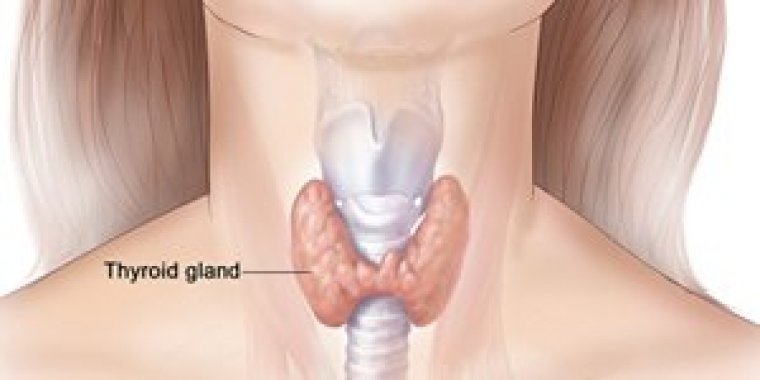| Health / Health News |
Long-term increased risk of cancer death following common treatment for hyperthyroidism
Findings from a study of patients who received radioactive iodine (RAI) treatment for hyperthyroidism show an association between the dose of treatment and long-term risk of death from solid cancers, including breast cancer.

The thyroid is a small, butterfly-shaped gland in your neck. Photo: NIH
“We identified a clear dose–response relationship between this widely used treatment and long-term risk of death from solid cancer, including breast cancer, in the largest cohort study to date of patients treated for hyperthyroidism,” said Cari Kitahara, Ph.D., of NCI’s Division of Cancer Epidemiology and Genetics, lead author of the study . “We estimated that for every 1,000 patients treated currently using a standard range of doses, about 20 to 30 additional solid cancer deaths would occur as a result of the radiation exposure.”
RAI, which has been used widely in the United States for the treatment of hyperthyroidism since the 1940s, is one of three commonly used treatments for hyperthyroidism. The other two are anti-thyroid drugs, which have been rising in popularity, and surgical treatment, which is used least often.
The new findings are from a long-term follow-up study of a large cohort of people with hyperthyroidism (mainly Graves’ disease) who were treated with radiation between 1946 and 1964, the Cooperative Thyrotoxicosis Therapy Follow-up Study.
In the new analysis — which included nearly 19,000 people from the original cohort, all of whom had received RAI and none of whom had had cancer at study entry — the researchers used a novel, comprehensive method of estimating radiation doses to each organ or tissue.
Most of the radiation is absorbed by the thyroid gland, but other organs like the breast and stomach are also exposed during treatment.
The researchers observed positive dose–response relationships between the dose absorbed by an organ and mortality from cancer at that site. The relationship was statistically significant for female breast cancer, for which every 100 milligray (mGy) of dose led to a 12% increased relative risk of breast cancer mortality, and for all other solid tumors considered together, for which relative risk of mortality was increased by 5% per every 100 mGy.
Based on these findings, the researchers estimated that for every 1,000 patients aged 40 years with hyperthyroidism who were treated with the radiation doses typical of current treatment, a lifetime excess of 19 to 32 radiation-attributable solid cancer deaths would be expected.
The researchers wrote that additional research is needed to more comprehensively assess the risk–benefit ratio of radiation versus other available treatment options for hyperthyroidism. (National Institutes of Health)
YOU MAY ALSO LIKE




